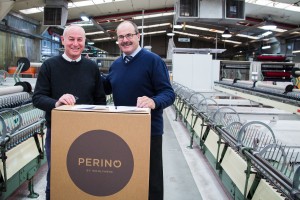April, 2015
Agreement delight for possum fur dealers
An agreement between the Conservation Department and Fur Council has been welcomed by veteran Wanganui possum fur and skin buyer Colin Cox.
The memorandum of understanding signed last week will make it easier for possum hunters and trappers accredited by the New Zealand Fur Council to work on conservation land. More>>>
TV3 News – Fur agreement a win-win – but not for possums
A new agreement between the Department of Conservation (DOC) and the New Zealand Fur Council (NZFC) is a win-win for all, except for possums.
The new memorandum of understanding (MOU) signed today will make it easier for NZFC-accredited hunters and trappers to gain access to public conservation land for fur recovery operations.
Both DOC and NZFC say the agreement will allow New Zealand’s possum fur industry to grow as well as aid conservation benefits. MORE >>>
Agreement a win-win – except for possums

Chairperson of the New Zealand Fur Council Neil Mackie and Department of Conservation Director-General Lou Sanson signing MOU at Woolyarns NZ.
Greater conservation and economic benefits will follow an agreement signed by the Department of Conservation (DOC) and New Zealand Fur Council (NZFC) today.
DOC already works with individuals who wish to hunt and trap on conservation land, but this Memorandum of Understanding (MOU) with the collective voice of the possum fur industry will make it easier for Fur Council accredited hunters and trappers across the country to gain access to public conservation land for fur recovery operations.
“We need more possum fur to increase the market size for New Zealand’s unique blended Brushtail possum yarns and garments,” says Neil Mackie, chairman of the New Zealand Fur Council.
“Many of the possums in our country are on public conservation land, so the MOU will allow trappers to access more fur, increase the market, and better target ecologically important areas.”
Lou Sanson, Director General of Conservation says: “The agreement is a pragmatic way to broaden the battle against a pest that preys on native wildlife and eats an estimated 21,000 tonnes of bush a night. We have to prioritise our possum control operations on the areas where the forests or wildlife are most vulnerable but there are millions of hectares of bush that we simply can’t get to.
“By encouraging fur trappers into these areas we can deliver results for the taxpayer, the fur industry, and conservation. Our research shows that having trappers knocking down possum numbers in the buffer zones around our own targeted pest control projects can delay possum re-invasion by two to three years.
“DOC spends more than $10 million a year on possum control so any delay in re-invasion will give New Zealanders’ more bang for their buck – as well as precious extra time for our native plants and birds to recover. The fact that New Zealand businesses and local communities will also benefit from enabling more fur recovery operations is the icing on the cake.”
Mackie says there is unfulfilled international market demand for blended Brushtail products.
“Working alongside the Department of Conservation will be an important part of telling overseas consumers how possum fur products are environmentally and ethically sound. We’ve been delighted with DOC’s willingness to work with the trapping industry and look forward to a rewarding and ongoing relationship,” says Mackie.
As well having been seen on the fashion catwalks of Paris, in the increasingly trendy hand-knitting scene, blended Brushtail possum yarns are recognised as a special product he says.
